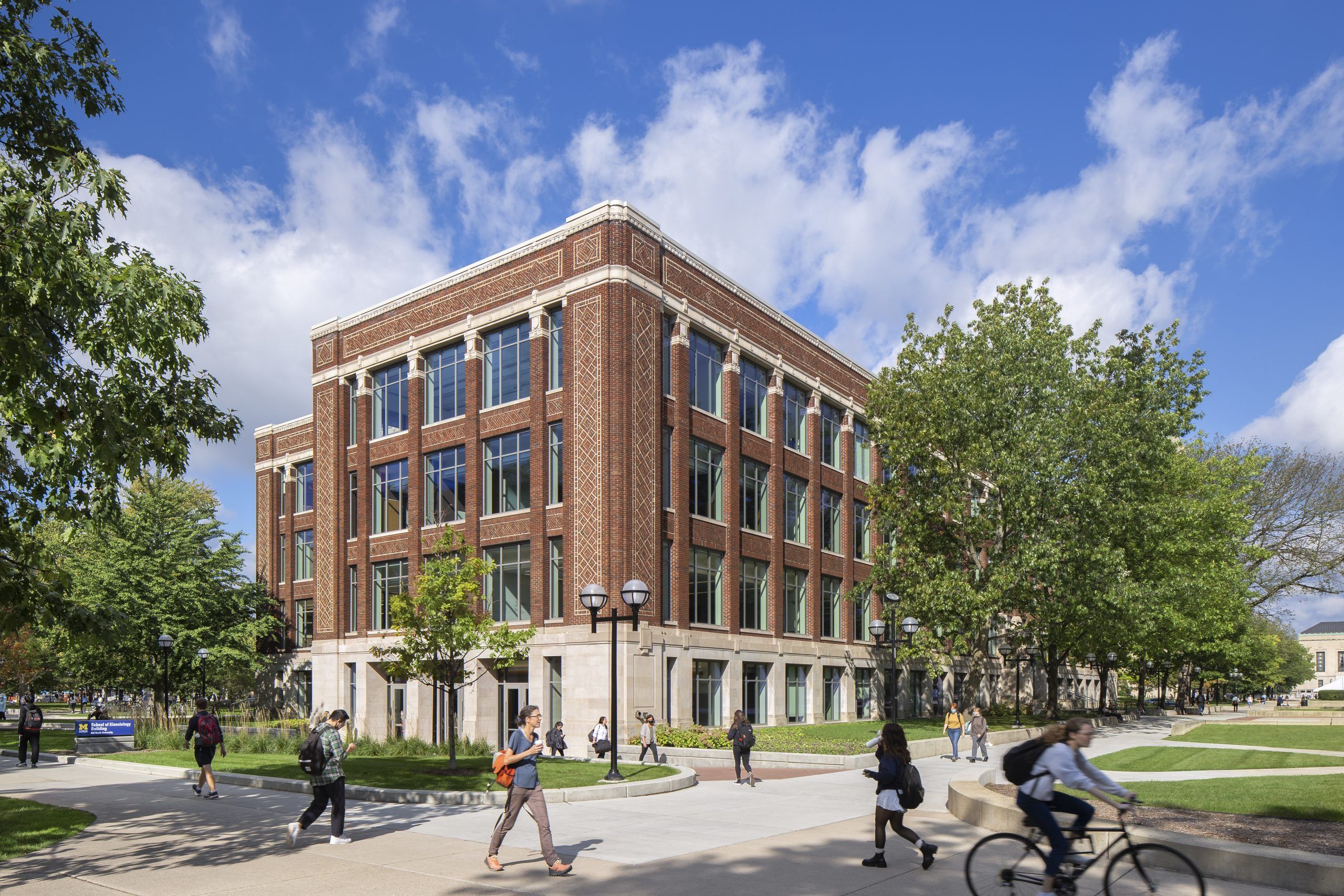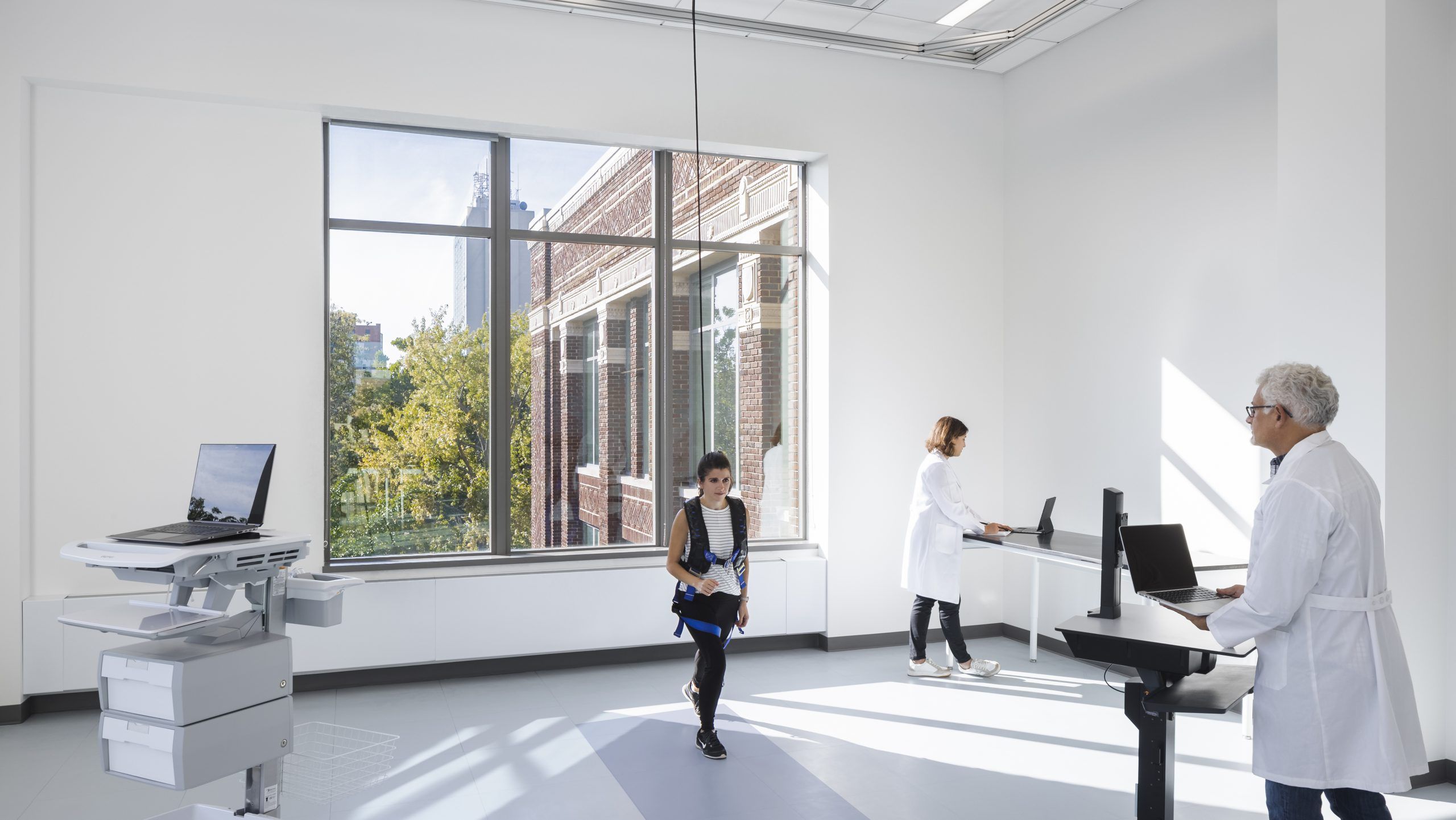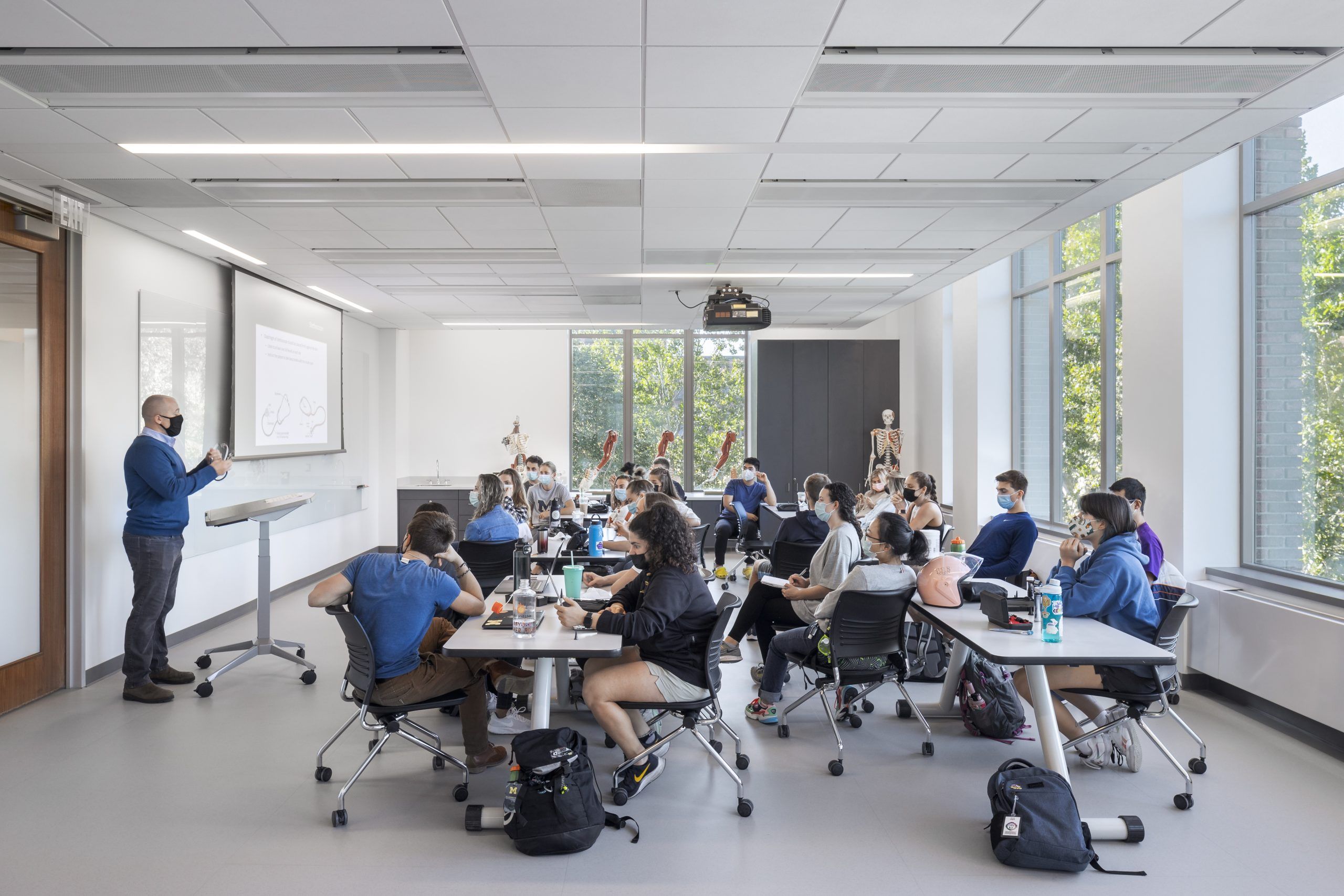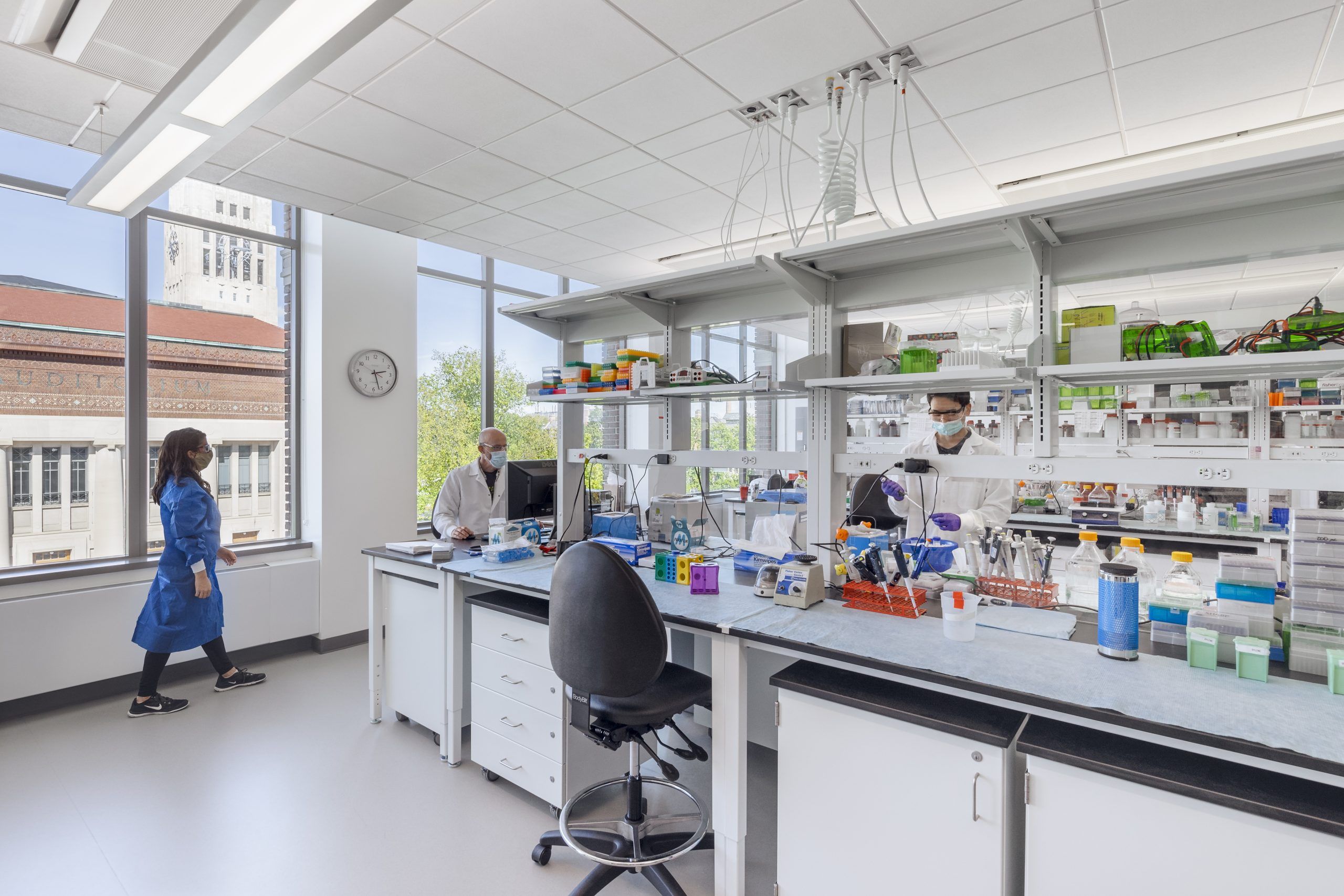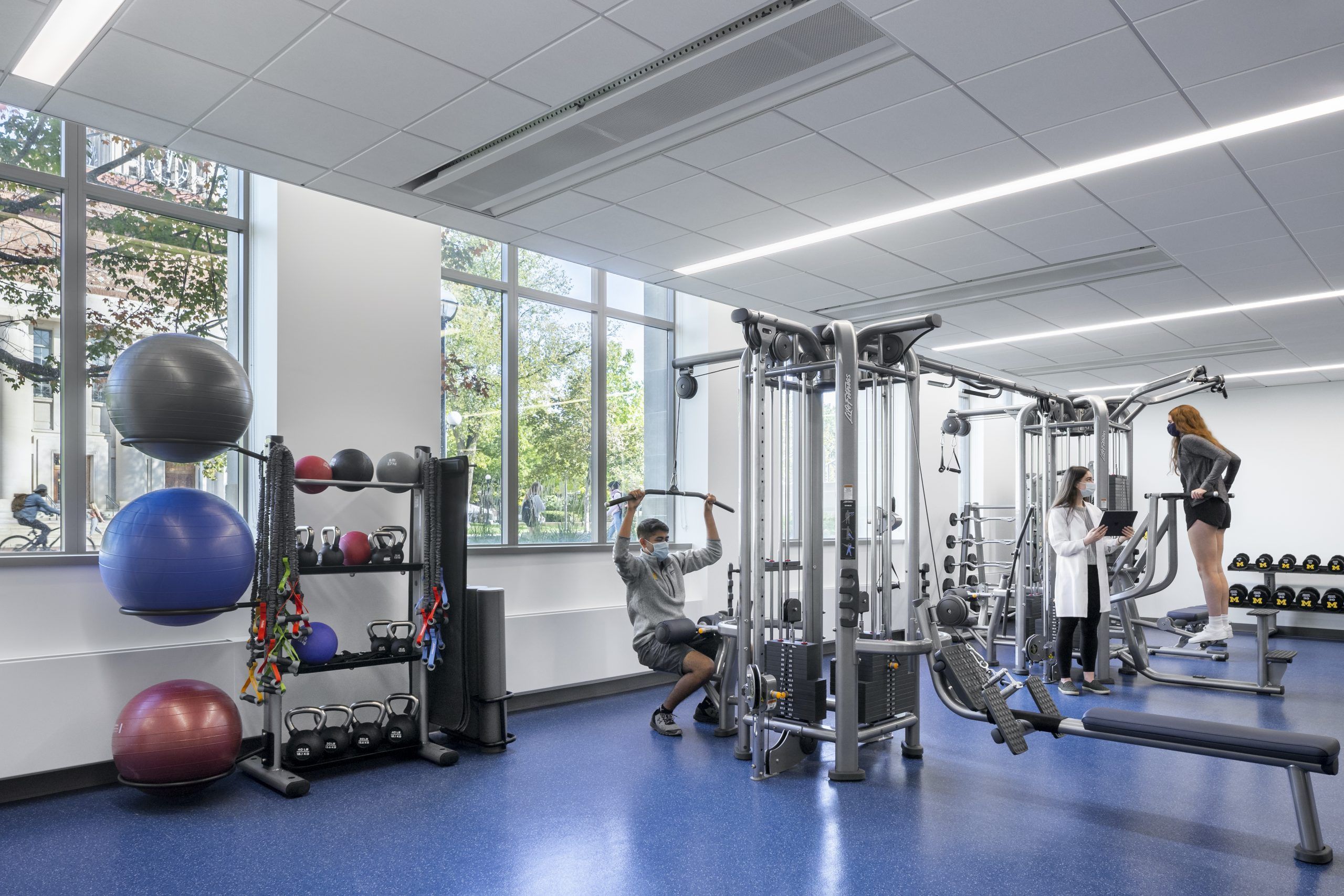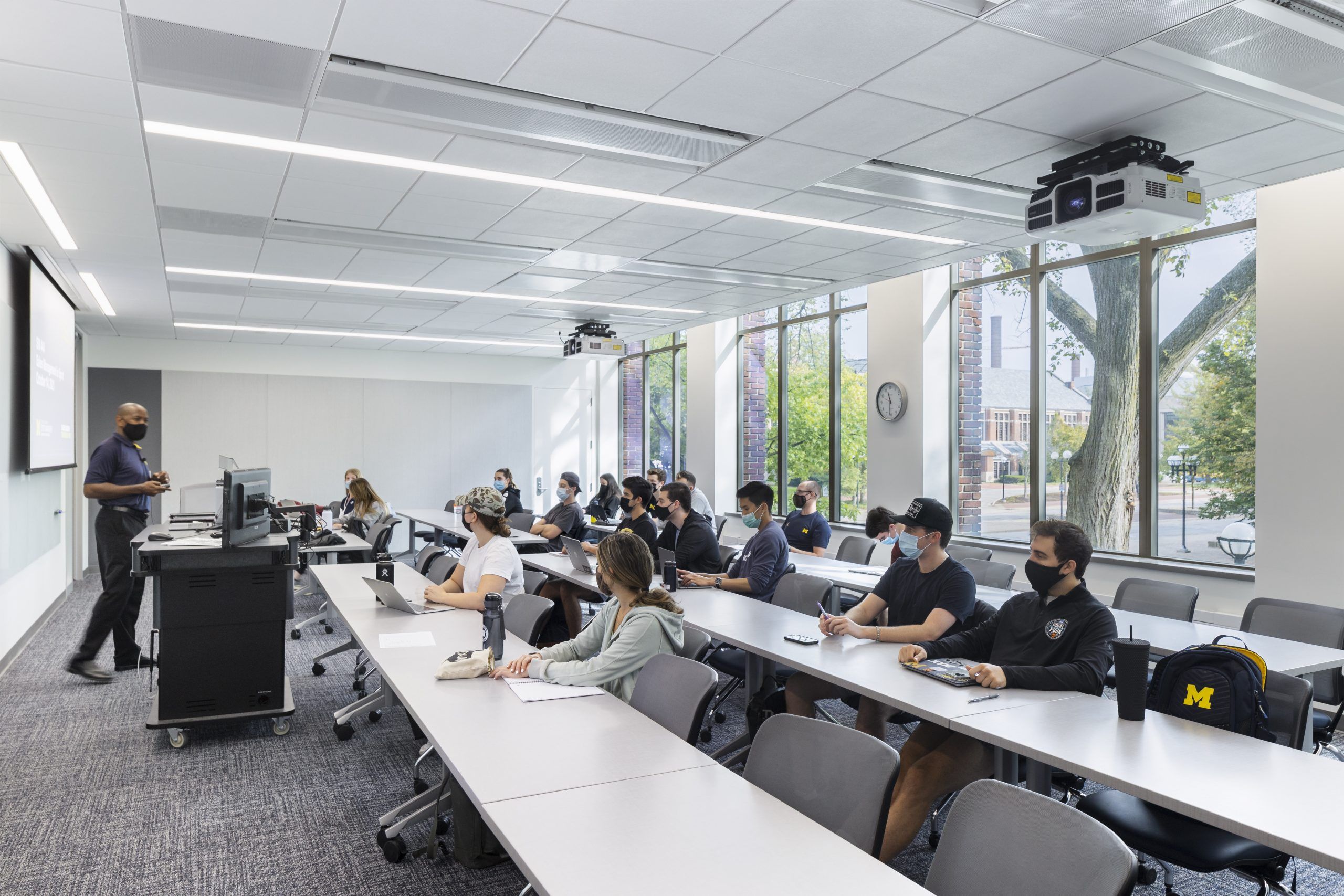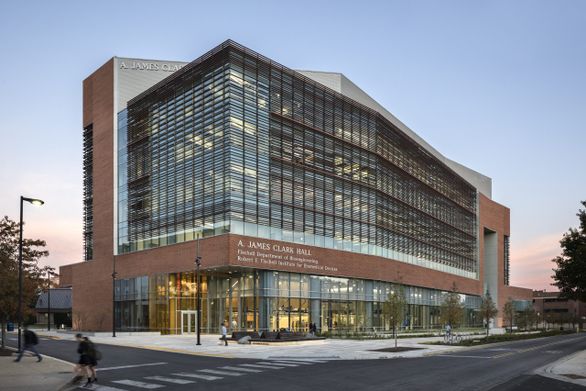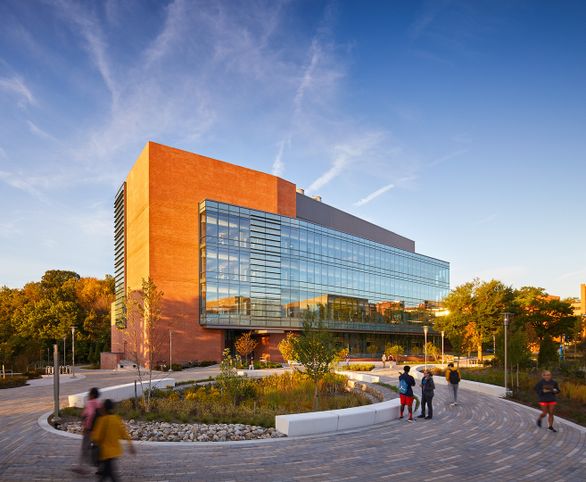University of Michigan
Investing New Life into an Icon of Scientific Research
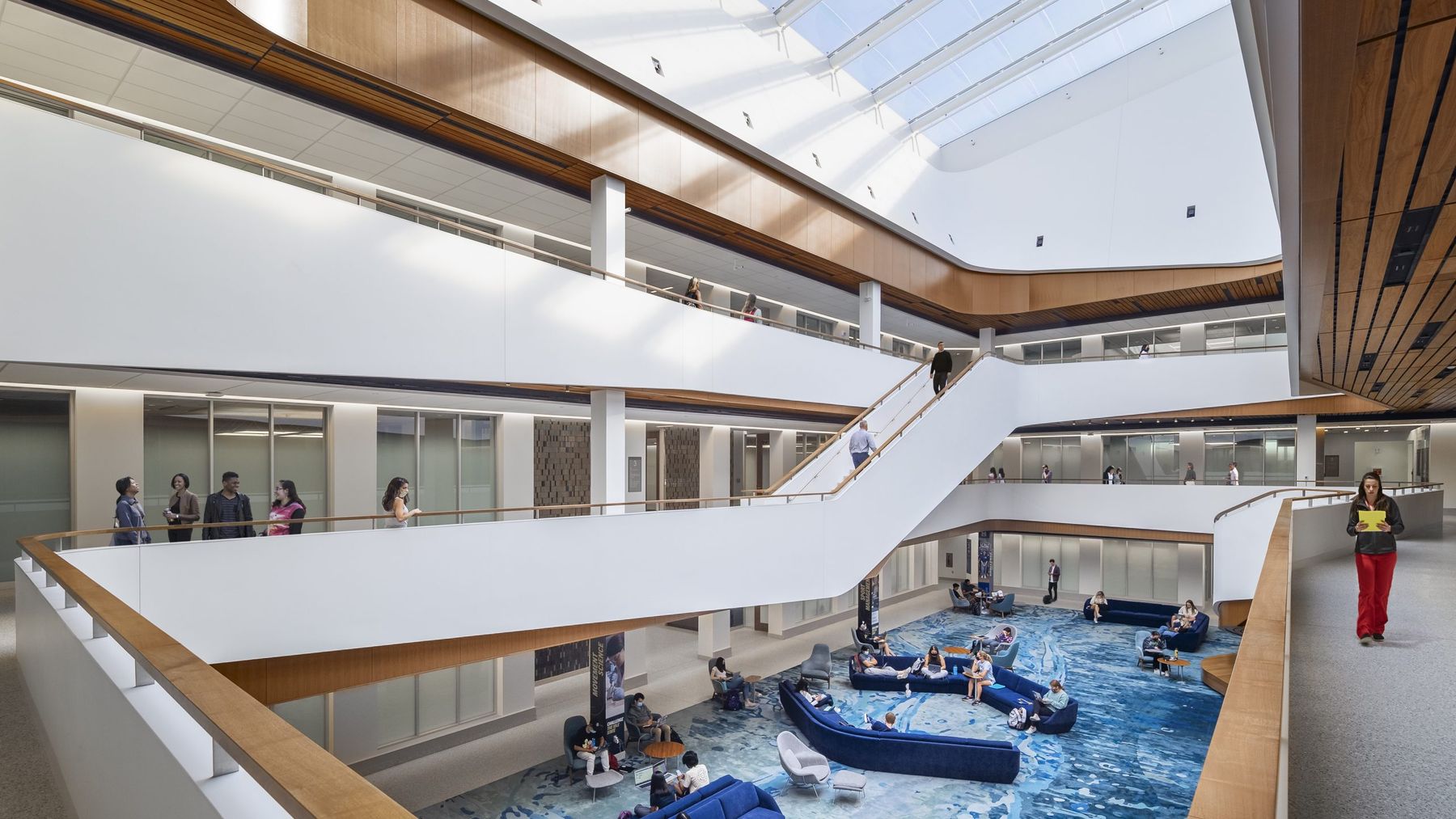
University of Michigan
Kinesiology Building
A century ago, when celebrated architect Albert Kahn designed the University of Michigan’s Kraus Building, botany and mineralogy were still cutting-edge disciplines. Kahn met their laboratory needs by adopting the innovations of factory design, aimed at maximizing daylight, to an academic setting. It was a pioneering move and the building became a campus icon and a symbol of research excellence.
The cutting edge of science has moved on. Today, the university’s fourth largest school is devoted to kinesiology, the science of physical activity. As social understanding of movement’s importance to wellbeing grows, so does student interest in kinesiology. This explosion of interest in kinesiology created a need to consolidate the school’s programs into a single home with room for expansion.
A perfect opportunity to renew the Kraus Building’s relevance – if a way could be found – was to transform the structure for the 21st century while retaining its historical character.
key information
In-Depth Studies of the Existing Building Reveal Solutions for its Renewal
Ballinger’s integrated architecture and engineering team, in collaboration with local partner TMP Architecture, evaluated every aspect of the building against programmatic needs and determined that the original structure, including an inner courtyard, was worth preserving.
After Kahn’s time, the courtyard was cluttered with additions: a massive chiller plant and a ring of low-ceiling buildings along the courtyard perimeter, which Ballinger’s team realized had no historic character, were antiquated technologically, and unsuitable for contemporary research and learning.
To leverage the potential of the courtyard, Ballinger’s design removes the modifications from the courtyard and replaces them with an infill performing many functions.
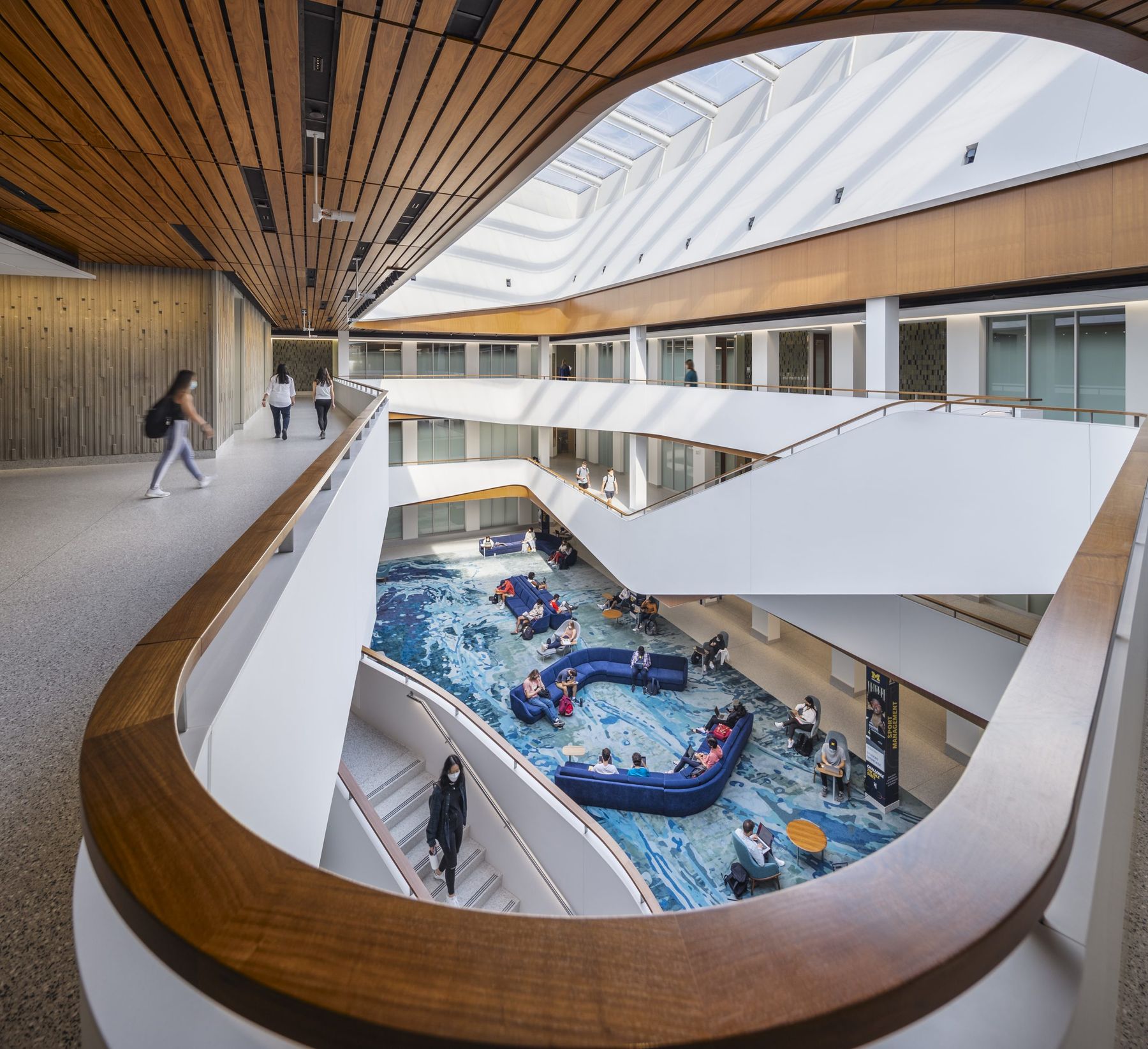
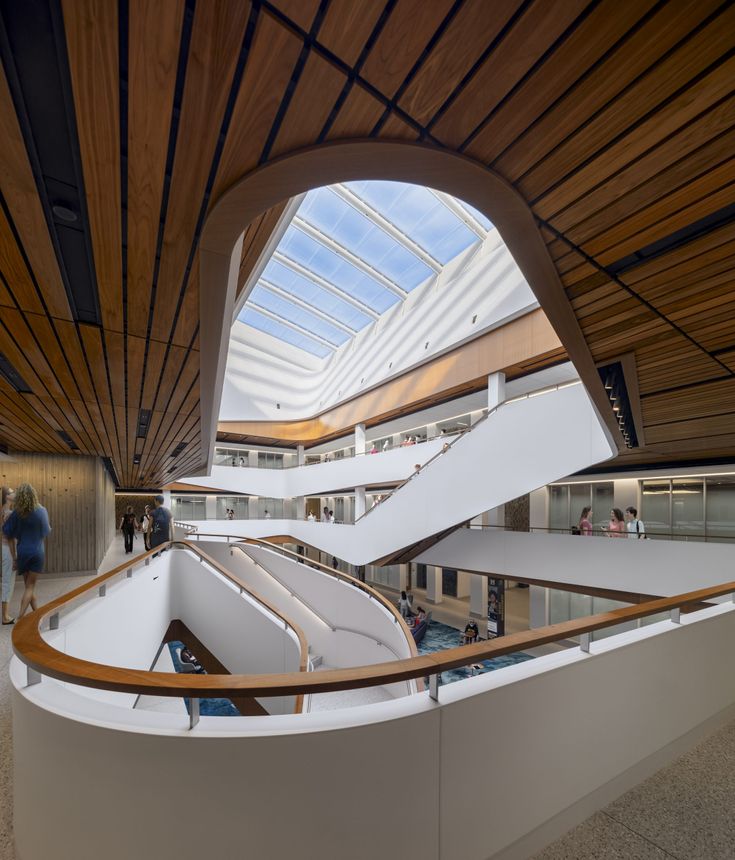
Filling an Old Courtyard with New Construction & New Purpose
As a reinforced concrete “tube,” the infill strengthens the building laterally, doing away with the need for columns and creating a four-story free-span space. Wrapped in curving staircases and overlooked by breakout balconies, this new commons acts as an academic crossroads for students and faculty. By encouraging collaboration, enabling interdisciplinary work, and reflecting human movement, it establishes a new identity for the building and new potential for the disciplines it houses.
The lowest level of the infill accommodates the high-tech requirements of researchers investigating mobility, such as lofty ceilings for motion capture cameras and overhead harnesses, along with recessed floor pits for equipment and vibration isolation.
Atop the new infill, a skylight floods the space with daylight. Ballinger’s transformation of the building, now called the Kinesiology Building, has revived Albert Kahn’s spirit of innovation.
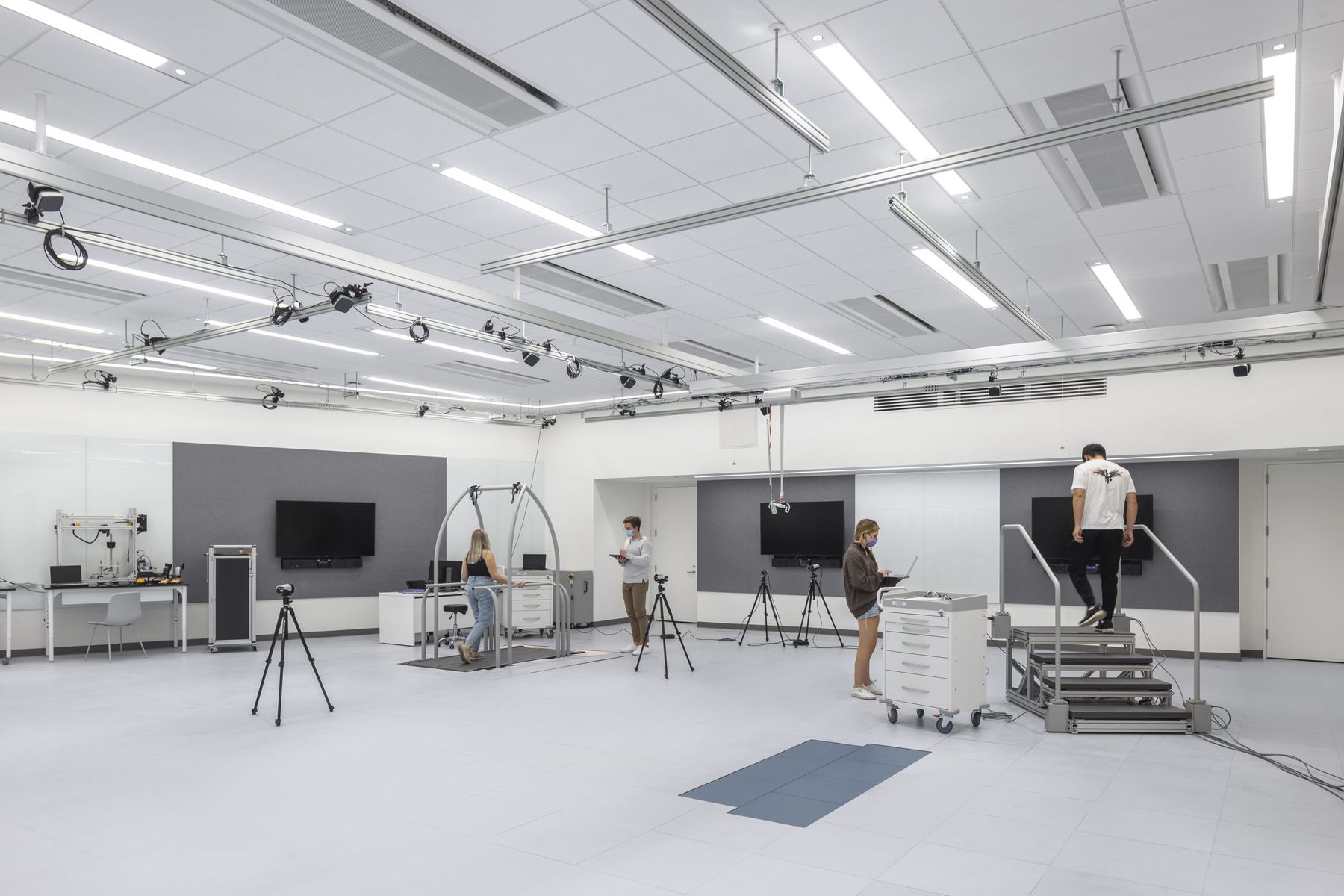
Hear from the University of Michigan Faculty & Students
American Institute of Architects Detroit
Honor Award for Historic Restoration
American Institute of Architects Philadelphia
Merit Award
American Institute of Architects Pennsylvania
Merit Award, Preservation Architecture
American Institute of Architects Pennsylvania
COTE Award of Excellence
ASHRAE Philadelphia
Technology Award
ASHRAE Mid-Atlantic
Technology Award
ASHRAE
Second Place Technology Award
